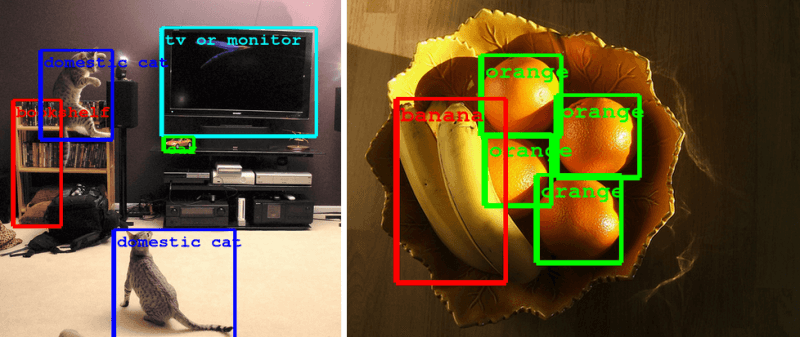Recently a group of Google engineers took top score in a number of categories at the annual ImageNet computer vision competition for their work with automatic image detection. The researchers have developed a new detection technology that can automatically identify large numbers of objects within an image with much greater accuracy than previous systems.
The system can identify large numbers of objects within a given image, even when partially obscured, using something called a neural network. This AI network allows the system to constantly be switching between search criteria, allowing for much better item identification without the need for a massive amount of computing power. Based on the example above given by Google, it can track a TV monitor, two small domestic cats (one on the floor, one mid-jump) as well as a partially obstructed bookshelf and other things in a single image.
The technology is still in its infancy but many suggest it could have major implications with self driven cars and other automated robotic services in the future. On a more immediate basis, the tech could be a major part of visual search engines and other image related user services. A recent Google Research blog post said these technological advances are "directly transferable to Google products such as photo search, image search, YouTube, self-driving cars, and any place where it is useful to understand what is in an image as well as where things are."
